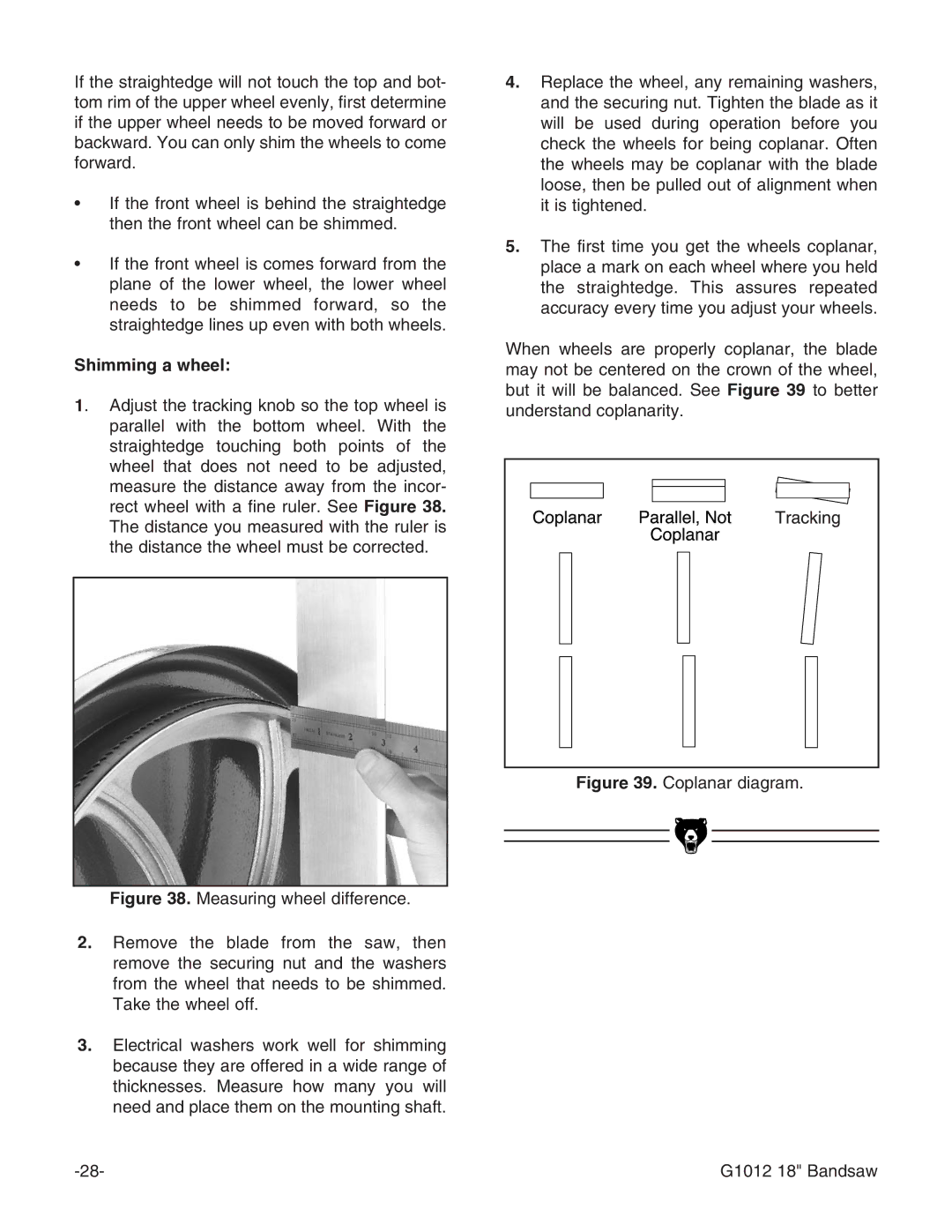
If the straightedge will not touch the top and bot- tom rim of the upper wheel evenly, first determine if the upper wheel needs to be moved forward or backward. You can only shim the wheels to come forward.
•If the front wheel is behind the straightedge then the front wheel can be shimmed.
•If the front wheel is comes forward from the plane of the lower wheel, the lower wheel needs to be shimmed forward, so the straightedge lines up even with both wheels.
Shimming a wheel:
1. Adjust the tracking knob so the top wheel is parallel with the bottom wheel. With the straightedge touching both points of the wheel that does not need to be adjusted, measure the distance away from the incor- rect wheel with a fine ruler. See Figure 38. The distance you measured with the ruler is the distance the wheel must be corrected.
Figure 38. Measuring wheel difference.
2.Remove the blade from the saw, then remove the securing nut and the washers from the wheel that needs to be shimmed. Take the wheel off.
3.Electrical washers work well for shimming because they are offered in a wide range of thicknesses. Measure how many you will need and place them on the mounting shaft.
4.Replace the wheel, any remaining washers, and the securing nut. Tighten the blade as it will be used during operation before you check the wheels for being coplanar. Often the wheels may be coplanar with the blade loose, then be pulled out of alignment when it is tightened.
5.The first time you get the wheels coplanar, place a mark on each wheel where you held the straightedge. This assures repeated accuracy every time you adjust your wheels.
When wheels are properly coplanar, the blade may not be centered on the crown of the wheel, but it will be balanced. See Figure 39 to better understand coplanarity.
Figure 39. Coplanar diagram.
G1012 18" Bandsaw |
